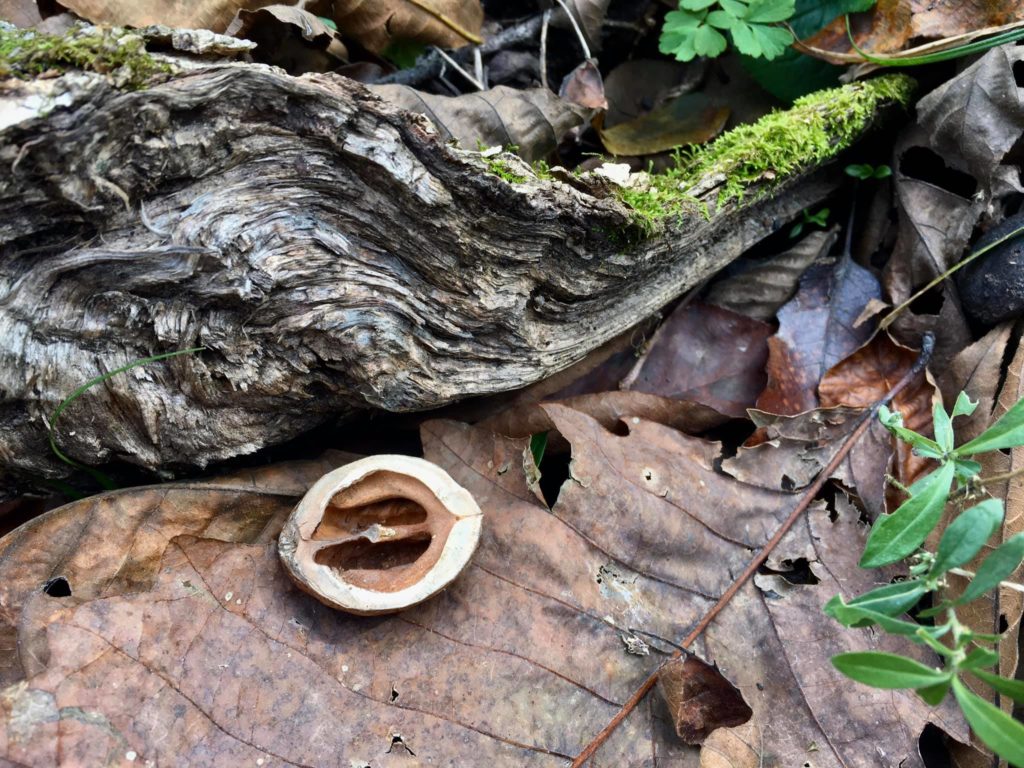by Peter Pierson
2020
Being very much at home through these months of staying-at-home, I did notice when we went from cicada-buzzing, smoke from western wildfire-filled skies, 90-degree afternoons to a bona fide autumnal cold, wet morning in a matter of hours. It did not escape my attention that my neighbor has been pressure-washing his driveway for what is now five straight ten-plus hour days. These things would likely stand out on any given day. This staying-at-home through what continues to unfold as the ineffable year of 2020, though, has offered the unexpected opportunity, and the invitation, to pay attention and notice so much more of what is right before our eyes and fingertips. The world, magnified from the terrarium existence of these days, calls for us to not turn away, but to look deeply, to uncover, to see the detail in what is unfolding around us, and among us. That detail is quite amazing; and to our unaccustomed senses and perceptions, a bit overwhelming at times.
Home in my case is a 1970’s era-built spot on the far edge of the suburbs south of Kansas City. After much of my years spent in wilder places from northern Minnesota to Nome and Ester, Alaska and high-country Arizona, I find myself entwined in a verse of a Talking Heads song when I wake up now to the ritual of lawn mowers on Saturday mornings. Getting here, and being here, involves helping my partner’s 80-something-year old master gardener mother maintain the place she’s made home for over forty years. The gardens and now grown-over wooded edges along with the broken sump pipes and clogged gutters do offer, I have to admit, some footing for a sense of belonging. And being home most of every day the last six months has drawn my attention to things I would have likely missed had life been a bit more ordinary.
If things had been that bit more ordinary, I would have not been home, sitting outside with a cup of coffee on a dew-laden morning, to hear a Yellow-bellied Cuckoo calling from a sycamore in the yard next door—one of the now over seventy-five species of birds we’ve seen or heard from our little piece of property the last year. I would not have been around one afternoon in April, tending to renegade violets encroaching into the beds of first-year asparagus, to catch the movement in the undergrowth beside a little stretch of water flowing in the backyard—a rare glimpse of a migrating Northern Waterthrush. We would not have been cleaning up lunch and noticing the Mississippi Kite that spent part of a day perched on a bare branch in full view from the kitchen window—a life-lister for me. I know first-hand that two nests of Red-shouldered Hawks in the neighborhood fledged in early June, at least two from each nest, the juveniles calling to their parents from fences, clotheslines, and swing sets until they became more self-sufficient in July. We found Gray tree trogs in every color variation when we picked and cut from the squash, cucumbers, and parsley and watched swarms of Milkweed tiger moth caterpillars devour one of the milkweeds that had grown to over six feet tall along the edge of the yard.
What we find with this attention we’ve been gifted is not all clean and neat and tidy. We encountered wheel bugs living up to their common nickname, assassin bugs, at the expense of a variety of caterpillars on the Seven Sons tree that anchors one of the islands that break up what’s becoming less and less of the standard manicured lawn. We watched wasp larvae reduce a Tobacco hornworm caterpillar to a deflated piece of outer tissue and gathered up piles of jay and dove feathers after our resident Cooper’s Hawks have been successful.
It’s all there, right in front of us, and these days seem to invite our attention to it—just as when we come inside at the end of a day, turn on the television and are met more often than not with the warning from the host: We need to warn you that some of the images are graphic, and some may find disturbing. Something about these days, though, has created an opening. We don’t seem to turn away as we may have done before. We watch and find our attention fully drawn to what streams across our television screens and we make the connection that it truly is personal, immediate, right before us, with more than a passing sense of gawking curiosity. Perhaps it’s in the frequency of the stories of black men pleading for their lives as they’re pressed to the asphalt by those who are supposed to serve and protect us all. Perhaps it’s that it really doesn’t seem to end and what may have once been disbelief has been worn down to acknowledgment. Perhaps it’s in the intensity these events are being confronted by a growing movement and a growing awareness. Something in these days brings our attention to our home places, and to not turn away this time.
In these days of staying-at-home, there doesn’t seem to be much of an away for one to turn. We’re here; and it, all of it, is right before us: the institutionalized racism and injustice and inequality; the virus disproportionately taking from those without access to healthcare; the growing lines of people stretching for blocks, miles in some cases, waiting for food donations to feed their families while in the same newscast we are confronted with stories and images of farmers and dairy and poultry producers destroying tons of produce and milk and flesh because our prevailing profit-oriented distribution systems fail to adapt to changing demand.
In all of this, I am very aware that it is a privilege to move through these times with this emergent awareness for such things as the four different species of swallowtail butterflies that find our property to their liking and to be afforded the time to reflect on how it is settling into one’s life, and then to sit down and write about it. I am fortunate, and more than just a little bit grateful, to have a stable home with a roof over my head, food on the table—all with the love and kindness of family.
I sense that I’ll have opportunities to pay it back, and pay it forward, in the months and years ahead in ways I’ve yet to imagine. As we re-envision how we live in place and how we live with each other as we move through these days of COVID, we just don’t know what it will look like on the other side. NDN Collective’s Jade Begay summed it up when she foreseeably wrote in March, early in the days of COVID, “We can not go back to business as usual after this experience. We have to apply what we learned to our lives, to our politics, and to our relationships…”
We do, though, know what it can look like. When the time comes, it will be there, right before us, to take it in with all our senses intact, inviting us to do something. These days may also serve as a reminder then, an affirmation, of the premise that when one is just not sure where to start, you start with what is right before you. In coming to see and to know what unfolds before us, in our home places, in our communities, and to embrace that we are not merely passive observers to the spectrum of our shared experience, there just may be hope in all the places we find connection—be them wild, or simply wild with possibility.
In September, the first genuine cold front of the season brought early snow on the other side of the state, just a couple hundred miles west of us. Hummingbirds swarmed the feeder and monarchs clustered in late-flowering trees in numbers I’d never seen before as they came through on what became their hurried way south. Chickadees and titmice are flocking and calling, announcing that they will be staying through the cold ahead. The maple and sweet gum leaves are turning and beginning to fall; the latter’s thorny seed balls, it’s fruit, clinging to the branches through the winter and into the next spring. I heard geese this morning, high in the sky before the sun came up. All in time, though. The first weeks of October brought a return of stifling hot, dusty days. The windows are wide open tonight. The katydids and crickets and toads are back, rebounding from the recent cold nights, their chorus filling the house with their certainty.


